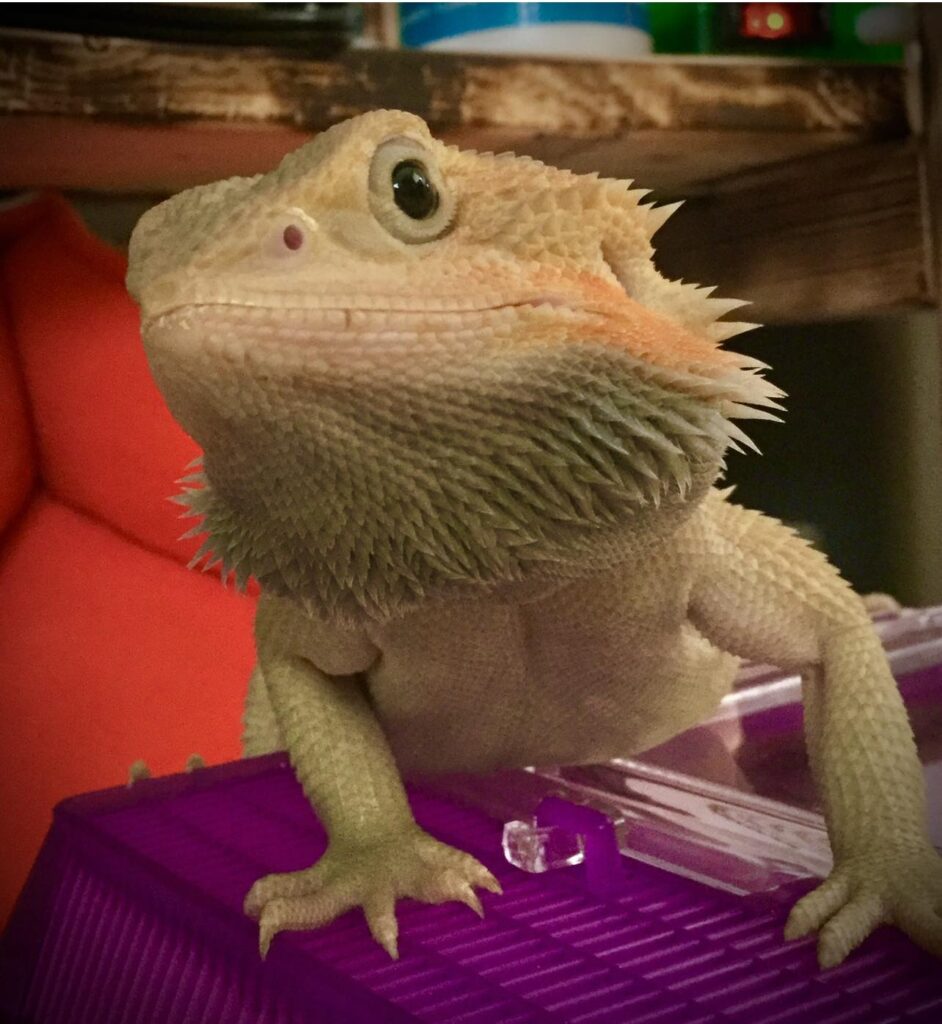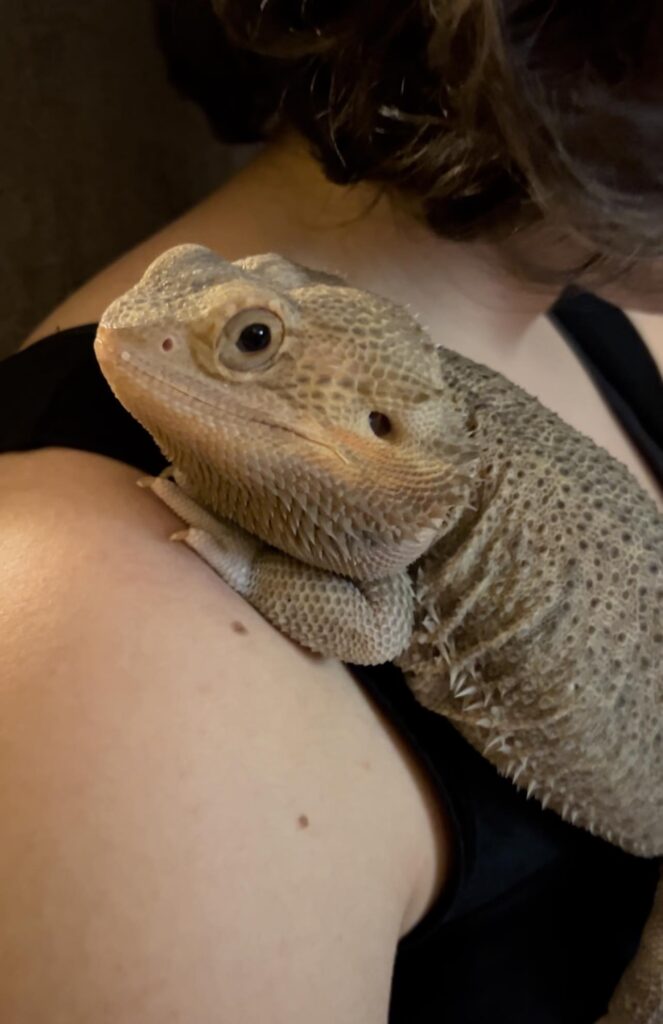
When my daughter was eight, she asked for a pet lizard. We said no. That’s when the letter writing began. At least once a week I would find a long list of all the reasons why lizards make the best pets. She would leave brochures from pet stores all over the house with care instructions and requirements. It took a few years, but she was relentless and we finally broke down. Scaly, the leopard gecko, was officially part of the family.
Leopard geckos are one of the best reptiles for young pet owners. On top of being completely adorable, they are very handleable, won’t jump or bite, and are pretty low-maintenance—for a reptile. You can keep their heat and light cycle on a timer and their diet is relatively easy, a good supply of crickets and mealworms is all that is required. They move around and can be very fun to watch.
Bearded dragons are another great choice. The Peone family loves their three-and-a-half-year-old “gentle giant,” a bearded dragon named Barry. The family never owned lizards before and were pleasantly surprised by his easy-going personality and the fact that he likes to hang out with everyone. Heidi Peone says, “Most nights, he’ll lounge and cuddle on our shoulders and watch tv as the night winds down—like a scaly puppy!”

Bearded dragons are probably the best reptile for handling, they will sit on your shoulder and stay there. They can get up to twenty inches long and about one to two pounds. They need to be supplied with fresh greens and live insects every day.
Snakes can be a great choice for a pet and fun to play with. The corn snake is a nice size for handling, fun to play with, and only needs to eat once a week. The ball python is fun and calm— he’ll hang out with you while you watch a movie. The Antaresia is a tiny python from Australia, the smallest of the species, and they don’t go on hunger strikes like some larger snakes.
Turtles are beautiful animals that require a lifetime of specialized diets that include dark, leafy greens, fish, and insects. Owners need to pay careful attention to their light, heat, and humidity levels. They are not the best choice for small children as they can become stressed or aggressive easily if over handled. They can also carry the salmonella bacteria.
The spotted turtle is a great choice if you have limited space but it might outlive its owner. Some of them live over 100 years! Red-eared sliders are friendly and very active. They are one of the most popular species of turtle when it comes to pets. Some types of turtles prefer an outdoor pond, and some thrive in an indoor tank.

The basics of reptile care
DIET
All reptiles will need to follow a specific kind of meal plan. Some of them need fresh greens every day. Most of them eat live food. Are you willing to go to the pet store regularly to purchase live food? Are you more comfortable with live crickets versus rats and mice? Don’t forget a fresh supply of water for your reptile. Humidity is very important, and you don’t want them to dehydrate.
KEEP IT CLEAN
Just like you need to clean up after your dog and cat, you’ll need to clean up after your reptile friend. Experts recommend spot cleaning daily and a deep clean of the entire enclosure once or twice a month.
DON’T OVERFEED
Remember that most reptiles can go weeks or even months in the wild without a meal. Overfeeding can cause health problems. Pay attention to the amount of food recommended for your specific reptile.
WATCH THE TEMPERATURE
Reptiles are cold-blooded which means they can’t regulate their body temperature. Especially if you live in Rochester, you’ll need to make sure they have heat and light. As the pet owner, you’ll need to do that for them. Your specific reptile will have a perfect temperature. Find out what that is and use a thermostat with your heat mat or basking bulb to make sure the temperature is regulated. You can even set a timer, so the days are warmer and the nights are cooler.
ENCLOSURES
When it comes to reptile enclosures, there are many options out there. Start by looking for the minimum enclosure size for your specific reptile and then go a little bigger if you can afford it and have the space. Bigger is always better in this case. The goal is to mimic their natural environment which would be a very huge space to live in and explore.
Do your research first. Find a reptile you will like but are also willing and able to care for properly for the duration of its life. The Peone family says, “Take care of them and they can be your good buddy for a while!”
Views: 14




